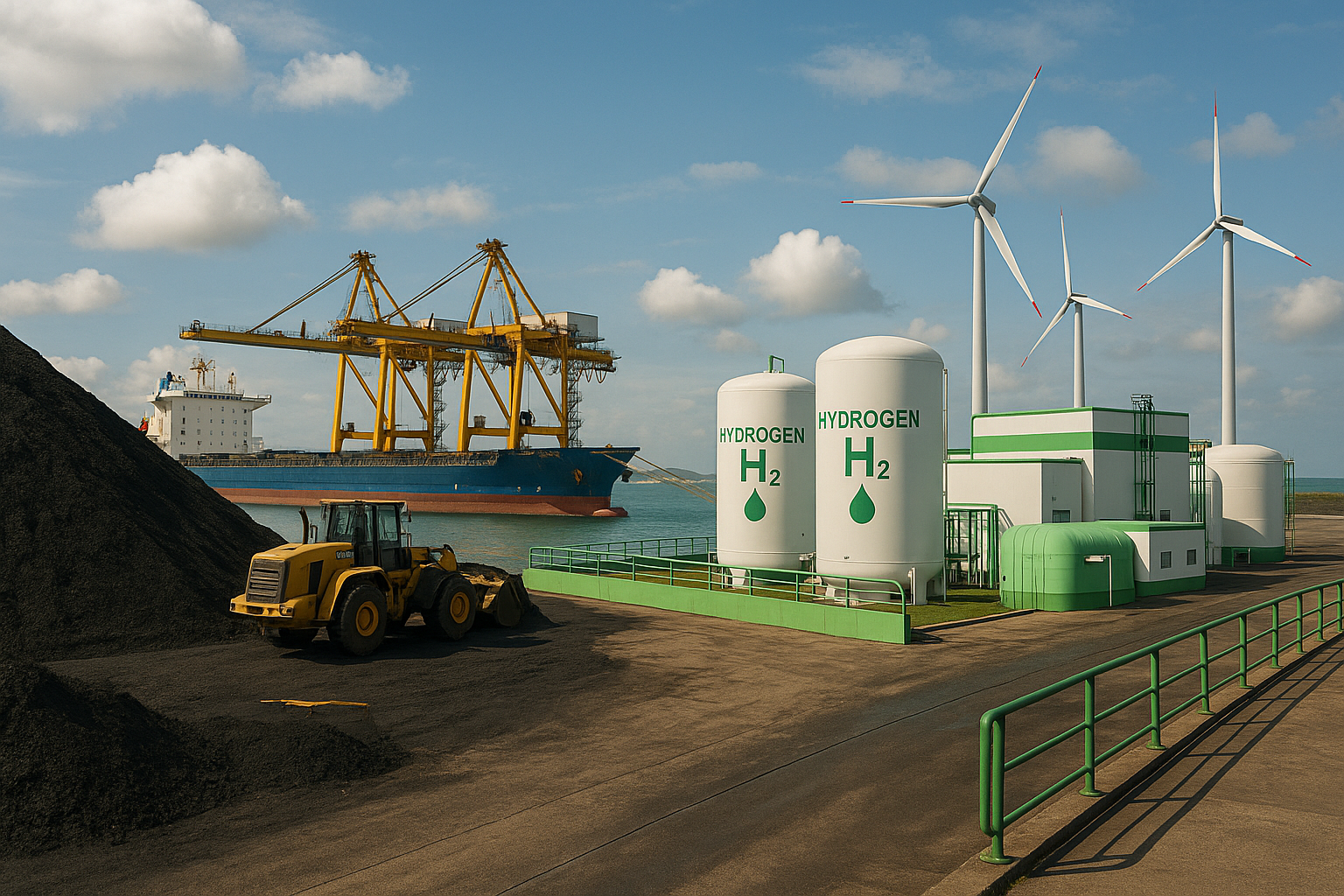From Coal to Clean Energy: Colombia’s Ports Eye Future as Green Hydrogen Export Hubs
The World Bank report outlines how Colombia’s Caribbean ports can become global hubs for green hydrogen-based fuel production, export, and bunkering by leveraging renewable energy resources. Success depends on international climate policies, strategic investment, and inclusive governance to ensure financial viability and socio-environmental sustainability.

In a landmark collaboration, the World Bank and Colombia’s National Planning Department (DNP) have joined forces with research institutions Hinicio, Cenit, and the University of the Andes to chart a new course for Colombia’s maritime economy. Their joint report makes a compelling case for leveraging the country’s coastal infrastructure to support a global green hydrogen value chain. As the maritime sector undergoes a seismic shift toward decarbonization, Colombia, rich in wind, solar, and port assets, is positioned to become a powerhouse producer and exporter of zero-carbon shipping fuels like green ammonia and green methanol.
From Coastlines to Catalysts: Evaluating Port Potential
The analysis took a structured two-phase approach to assess nine major ports across Colombia, ultimately identifying four on the Caribbean coast as the most promising for large-scale green fuel production: Cartagena, Barranquilla, Puerto Brisa, and Puerto Bolívar. These ports were chosen based on energy potential, industrial integration, infrastructure readiness, and socio-environmental factors. Puerto Bolívar, located in wind-swept La Guajira, leads with exceptional renewable resource availability, while Puerto Brisa stands out for its access to freshwater. Cartagena and Barranquilla bring proximity to existing industrial consumers, including Reficar and Monómeros, along with logistic advantages.
At each of these sites, the study modeled project setups targeting production of 50,000 tons of green hydrogen annually, enough to synthesize up to 400,000 tons of green ammonia or methanol. Out of 18 technical configurations evaluated, seven were selected as priority setups optimized for cost, scale, and market fit. These projects are slated to begin commercial operation around 2032.
Global Demand Rising: Exports Take Center Stage
The study’s demand analysis paints a vivid picture of rising international appetite for green hydrogen-based fuels, particularly in the European Union, Japan, South Korea, and Panama. Export demand is projected to reach 12 million tons H₂ equivalent by 2030 and could climb to 58 million tons by 2050. That dwarfs anticipated domestic use, making foreign markets the clear economic priority. Bunkering needs from international vessels calling at Colombian ports also offer revenue potential, though on a smaller scale, with Cartagena leading due to its role as the country’s busiest port and a key transshipment hub.
Industrial demand from sectors like fertilizers, refining, and heavy transport adds further value. Cartagena and Barranquilla are particularly well placed to meet this need. Reficar, for example, has already committed to supporting green ammonia production near Cartagena, while Barranquilla’s ties to fertilizer and gas industries make it an ideal candidate for dual-purpose supply, domestic and export.
Financing the Transition: Profitability Hinges on Policy
While the technical potential is robust, the financial analysis reveals that profitability hinges on the ability to sell green fuels at premium prices. Puerto Bolívar leads with the lowest levelized cost of ammonia, just over US$600 per ton, thanks to ideal wind and solar synergy. Methanol projects in Cartagena and Barranquilla also show attractive internal rates of return at 19–21 percent under favorable market assumptions. However, all projects become unviable if prices align with today’s gray ammonia or methanol markets. Methanol is particularly vulnerable, as its gray version is 73 percent cheaper than the estimated green premium.
The report underscores the decisive role of international climate policy in determining price viability. Future pricing for green fuels will largely depend on the enforcement of decarbonization rules by the EU, IMO, Japan, and South Korea. In a pessimistic scenario, financial viability could be restored through CAPEX subsidies (up to 44 percent for Cartagena) or reduced financing costs via concessional loans. Moreover, shared infrastructure, such as desalination plants or transmission lines, could cut expenses, while surplus renewable electricity and water could be monetized or directed to local communities.
Building the Hydrogen Economy: A Lighthouse Roadmap
To navigate this complex terrain, the report proposes a detailed “Lighthouse Roadmap” organized around six strategic axes: governance, regulation, value chain, market development, social and environmental management, and financing. Among its top recommendations are the creation of a national governance mechanism that includes regional governments and industry actors, recognition of key projects as “Projects of National Interest,” and regulatory reforms to classify hydrogen-based fuels as official bunkering products.
The roadmap also highlights the need for urgent progress on renewable energy capacity, biomass supply planning, and training programs to prepare Colombia’s workforce for green jobs. Social inclusion is given special emphasis, particularly in La Guajira, where engaging with Indigenous Wayuu communities will be crucial. Environmental safeguards such as brine management regulations and certified environmental impact assessors are also encouraged to ensure responsible development.
On the financial front, the report recommends exploring mechanisms such as public-private partnerships and a CORFO-style blended finance fund, modeled after Chile’s green hydrogen strategy. Multilateral platforms, including the World Bank’s own 10 GW Clean Hydrogen Initiative and Fondo de Transición Energética, are presented as key avenues to unlock concessional capital and reduce investor risk.
The report envisions Colombia’s ports as more than gateways; they are strategic launchpads for an energy revolution. With the right policy support, infrastructure investments, and stakeholder alignment, Colombia can rise as a regional and even global leader in green hydrogen, powering not only ships but a sustainable economic future.
- FIRST PUBLISHED IN:
- Devdiscourse
ALSO READ
L&T to Revolutionize Energy with India's Largest Green Hydrogen Plant
Andhra Pradesh Unveils Ambitious Green Hydrogen Valley Initiative
L&T Unveils India's Largest Green Hydrogen Plant at Panipat
Green Hydrogen's Promise Faces High Costs and Infrastructural Hurdles
Global Green Hydrogen Projects Face Setbacks Amid High Costs and Weak Demand










